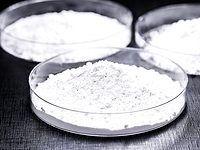New Study Looks at Market for Cool Roof Coatings

DUBLIN, Ireland – A new Fact.MR study foresees promising growth prospects for the cool roof coatings market, with a volume increase in 2018 over 2017 estimated at nearly 39,000 metric tons. Cool roof coatings have emerged as an effective remedy to urbanization challenges, which include elevating energy demand and scorching temperatures across tropical and subtropical regions. Additionally, cool roof coatings help to offset the strain on electric grids as rising living standards increase the demand for cooling and air conditioning.
Elastomeric plastic has traditionally reigned supreme among roofing materials in the cool roof coatings market. Over 6 in 10 metric tons of cool roof coatings are from these roofing materials, with global sales estimated at over 400,000 metric tons in 2018. The relative superiority of elastomeric plastic in terms of performance over its counterparts, such as tiles and metal, continues to underpin its supremacy in the cool roof coatings market.
The study estimates cool roof coatings sales for low-sloped roofs to exceed 395,000 metric tons in 2018. Low-sloped roofs are common in industrial and commercial buildings, and as construction activities in these sectors continue on an upward trend alongside urbanization, demand for cool roof coatings for low-sloped roofs will remain significant. Additionally, implementation of regulations for roofing materials and green building codes for industrial and commercial structures have led to higher demand for cool roof coatings.
A Senior Research Consultant at Fact.MR, S Jha, explained that roofs with steep slopes are primarily found in individual homes in countries that experience high snowfall and rainfall. Because less maintenance is required in these structures, the use of cool roof coatings has not been as prevalent as use in structures with slow-sloped roofs. Jha explained that this could change with the advent of advanced application techniques and quick-drying colored coatings.
As the impacts of climate change become increasingly visible, investment in sustainable technologies has increased worldwide to help improve the resilience of cities. The application of cool roof coatings to complement a building structure’s environmental performance, along with installations of solar panels, continues to gain high focus among prominent cities across the globe. Several cool roof programs by local authorities, such as Eco-Incentive Roof Program (Toronto) and NYC Cool Roofs, have further created significant demand for cool roof coatings.
Cool roof coatings have gained importance as a key solution to reduce the urban heat island effect, combat climate change, and improve air quality. Reduction in peak loads on electric grids, which leads to increased energy access, and enhanced community resilience to high temperatures are key benefits of cool roof coatings, contributing to market growth in this segment.
The market for cool roof coatings is primarily characterized by the presence of multinational companies, which have robust distribution channels and higher brand visibility. Fact.MR’s study reports that these players collectively account for over one-quarter of the cool roof coatings market. However, a majority share of the cool roof coatings market, over 50%, is expected to remain in a cluster of Tier 2 players.
The regional players, such as GAF Materials Corp. and Nippon Paint Holdings Co. Ltd., have established a presence in emerging markets such as Asia-Pacific, a region that holds significant latent opportunities for the industry. China remains the most lucrative country for sales of cool roof coatings, with global sales estimated at nearly 220,000 metric tons in 2018.
For more information about the study, Cool Roof Coating by Fact.MR, visit https://www.factmr.com/report/2364/cool-roof-coating-market.
Looking for a reprint of this article?
From high-res PDFs to custom plaques, order your copy today!






